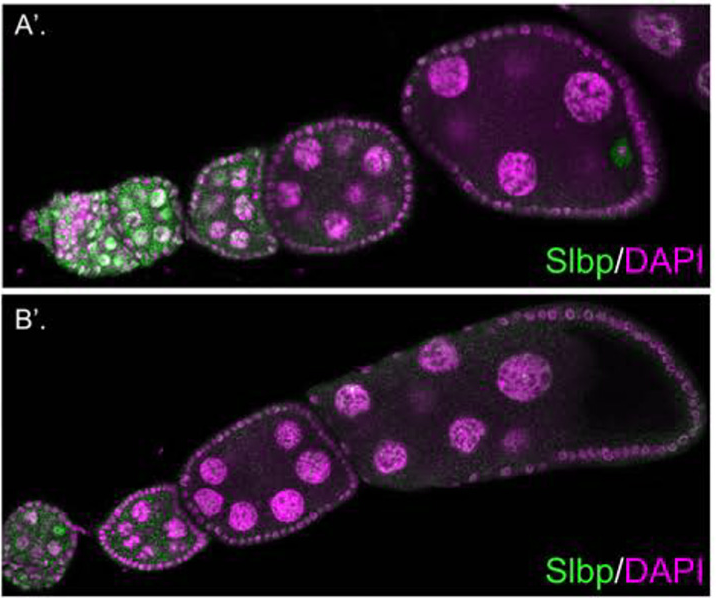 Michelle Potter-Birriel (Bill Marzluff lab) published an article titled “A region of SLBP outside the mRNA processing domain is essential for deposition of histone mRNA into the Drosophila egg” in Journal of Cell Science (DOI: 10.1242/jcs.251728). Jan. 06, 2021
Michelle Potter-Birriel (Bill Marzluff lab) published an article titled “A region of SLBP outside the mRNA processing domain is essential for deposition of histone mRNA into the Drosophila egg” in Journal of Cell Science (DOI: 10.1242/jcs.251728). Jan. 06, 2021

Abstract
Replication-dependent histone mRNAs are the only cellular mRNAs that are not polyadenylated, ending in a stemloop instead of a polyA tail, and are normally regulated coordinately with DNA replication. SLBP binds the 3’ end of histone mRNA, and is required for processing and translation. During Drosophila oogenesis, large amounts of histone mRNAs and proteins are deposited in the developing oocyte.The maternally deposited histone mRNA is synthesized in stage 10B oocytes after the nurse cells complete endoreduplication. We report that in WT stage 10B oocytes, the Histone Locus Bodies (HLBs), formed on the histone genes, produce histone mRNAs in the absence of phosphorylation of Mxc, normally required for histone gene expression in S-phase cells. Two mutants of SLBP, one with reduced expression and another with a 10 aa deletion, fail to deposit sufficient histone mRNA in the oocyte, and don’t transcribe the histone genes in stage 10B. Mutations in a putative SLBP nuclear localization sequence overlapping the deletion, phenocopy the deletion. We conclude a high concentration of SLBP in the nucleus of stage 10B oocytes is essential for histone gene transcription.
